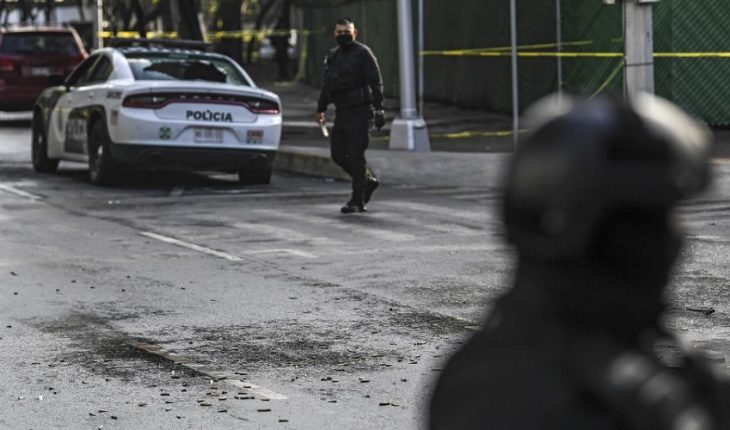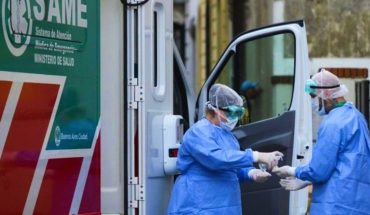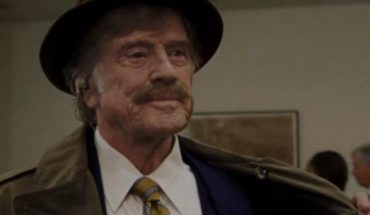The Jalisco Nueva Generación Cartel (CJNG), one of the five most powerful criminal organizations in the world according to the United States government, attempted to assassinate this June 26 in a planned attack and executed with high-powered weapons on the head of the capital police, Omar García Harfuch, in one of the most exclusive areas of Mexico City.
But the attack, unprecedented for the capital, is not the first warning of the presence of this group. On the contrary, it is further evidence of the growth of a cartel that has been operating in the Valley of Mexico for six years, even though for years the capital authorities insisted on denying it.
Find out ‘We were attacked by the Jalisco Next Generation Cartel’: Harfuch
In that span, the Jalisco Cartel went from seeking alliances for drug entrust in the capital, to moving shipments of drugs valued at millions of dollars at the capital airport.
The first official reports of the presence of this criminal group arose from the then Attorney General’s Office of the Republic (PGR).
In 2015, a report by the Criminal Investigation Agency (AIC) and the National Center for The Planning, Analysis and Information for combating crime on the presence of organized crime organizations in the country indicated that the CJNG had expanded its presence to nine entities and one of them was the City of Mexico.
Unlike in other states such as Guanajuato where the break-in was violent, the cartel’s presence in the city did not lead to homicides or shootings, but the PGR through SEIDO had indications of its involvement in drug trafficking and money laundering activities.
National official data were added reports from the U.S. Drug Enforcement Agency (DEA) and the U.S. Department of Justice that in 2016 were already identifying the Jalisco Cartel in a rapid expansion in 14 states in the country, including the capital.
As of 2017 it was the criminal group itself that made its presence known through messages placed on various homicides of alleged drug traffickers signed by the CJNG. One example, of several, was one placed on February 6, 2018 in the peripheral heart that was signed by the criminal group.
Then came the arrests as the one reported in June 2018 of 10 people, including six citizens of Chinese origin, at two addresses in Mexico City where more than $10 million was also seized. SEIDO reported that these people were linked to CJNG’s money laundering activities.
Beginning in 2018, following the change of government in Mexico City, Claudia Sheinbaum’s administration recognized that various cartels operated in the capital, including the Jalisco Cartel.
What happened in that time?
While the capital government led by Miguel Angel Mancera again and again denied that organized crime groups were present in the city, the CJNG was consolidating a policy of alliances through low-profile representatives in the Valley of Mexico.
According to investigations by García Harfuch himself from the Criminal Investigation Agency, the Jalisco Cartel supported with economic resources, weapons, vehicles and sometimes with hitmen from other states to local groups such as “The Tepito Anti-Union Force”, who in turn disputed territories with other gangs.
In return for that intervention, the cartel obtained a portion of the profits from nar-community, the collection of floor law in commercial corridors, among other illicit ones.
Since 2018, the AIC identified a subject named Aldo de Jesús Azcona Cortes alias, the Chucky, as the cartel’s main Mexico City representative, until he was arrested in May 2019 at the mayor Venustiano Carranza. This detention is presumed to have hindered a new alliance that CJNG sought to consolidate through Azcona with some of the local groups
Instead of Azcona he remained as representative of the Jalisco Cartel in the northern part of the capital María del Carmen Albarrán, aka La Cecy, who was arrested last April. Meanwhile, in the metropolitan area of the Valley of Mexico, another suspected representative of the cartel called Omar Ramses, alias el Calacas, has continued the search for alliances with new leaders of local groups.
In parallel with these partnerships, CJNG was able to establish operational bases with regional leaders for money laundering activities, and was presumed to have worked to infiltrate capital security forces at a key point: Mexico City International Airport (AICM).
In August 2018, right at the AICM, the Federal Police discovered hidden inside computer equipment 120 kilos of the drug knowngives as glass that they were bound for Australia. The investigation noted that it was a shipment of the Jalisco Cartel valued at at least $75 million.
Although the seizure was a blow to the criminal group, for the authorities it was evidence of the trafficking capacity that the group already had from the capital.
Criminal and transnational emporium
The current federal government sees the Jalisco Cartel as one of two cartels in Mexico with a “supranational” presence, that is, with its own presence or through allies in most of the country’s states. The head of the Financial Intelligence Unit, Santiago Nieto, defines it as a consolidated, well-organized criminal group with strong financial networks and diverse criminal activities.
The security authorities consulted by Political Animal and the reports of national and U.S. agencies attribute to the cartel the following criminal twists: Production, trafficking and drug trade wholesale and retail (methamphetamines, heroin and fentanyl mainly); fuel theft (initially in Jalisco and then to other states); extortion; kidnapping; human trafficking, and homicide.
According to the U.S. Department of Justice, the dominance of the Jalisco Nueva Generación Cartel includes operations in the center of the country and in the Mexican capital, with the production and control of major brokers for drug distribution.
“CJNG is a powerful drug cartel in Mexico that operates with sophisticated money laundering techniques, handles efficient drug transport routes and practical extreme violence,” the Department of Justice published in October 2018, when it also reported that the activities included not only the United States and Mexico, but also Europe, Asia and Australia.
For the United States, CJNG is one of the five most dangerous transnational crime organizations in the world, responsible for trafficking cocaine, methamphetamine and heroin mixed with fentanyl.
On March 11, the DEA reported that it had carried out an operation, known as the Python Project, after six months of investigation, which allowed 600 people linked to the Jalisco New Generation Cartel to be arrested; the start of 350 lawsuits and the seizure of money and drugs.
According to the DEA, this operation is the strongest blow the United States has hit against the operations of the CJNG, which it considers one of the most powerful and dangerous criminal organizations in the world.
Large-scale washing
To hide the profits, the product of their illicit activities in the financial system, both the governments of Mexico and the United States have identified an extensive money laundering network that uses the Jalisco Cartel.
The US Treasury department has outlined 33 companies linked to this criminal group and its partners the Cuinis in just under five years. An investigation by Political Animal found that 21 of the 33 companies (in 12 there is no public information) are linked to 62 people.
In addition, a review of these companies with the Synapse tool revealed that at least 9 of their members are linked to each other as they serve as partners, commissioners, delegates or legal representatives of the same companies.
Jessica Johanna González Oseguera, daughter of Nemesio Oseguera, whose name does not appear in the Treasury relationship, owns two of the companies involved in the washing networks: J & P Advertising, S.A. DE C.V. and Jjgon, S.P.R. DE R.L. DE C.V., bulletind in 2015.
For its part, the Mexican government announced the blocking of 1,939 accounts of individuals and trusts allegedly linked to the Jalisco Nueva Generación Cartel.
In a so-called “Agave Azul Operation,” the Finance Financial Intelligence Unit (UIF) said it had carried out blocking actions against 1,770 individuals, 167 companies and two trusts.
Untouchable leader
The leader of the CJNG is Nemesio Rubén Oseguera Cervantes, aka the Mencho, who on multiple occasions has managed to evade the capture attempts that federal forces since the last six-year., have been able to evade capture attempts. The security cabinet considers it the no.1 priority at the national level not only because of the scope of its criminal activity but because of its level of violence.
The U.S. State Department in 2015 designated Oseguera Cervantes as a specially designated narcotics dealer, including him on the Foreign Narcotics Kingpin Designation Act, and offered a $10 million reward, one of the largest awarded for drug trafficking issues.
Those who have been attained by justice are the sons of the Mencho: Rubén Oseguera González, Menchito, and second-in-command in the Jalisco Cartel, was extradited from Mexico to the United States last February on charges of drug trafficking, firearm use and other drug trafficking activities. In the same month, her daughter, Jessica Johanna Oseguera González, was arrested in the United States.
Extreme violence
The Jalisco Cartel has also been characterized by extreme violence against civilians and authorities. The most recent cases in which his authorship is presumed to be the attack on García Harfuch on Friday, as well as the murder of federal judge Uriel Villegas and his wife on June 16 in Colima.
But the history of assaults linked to the criminal group is very broad over the years. To cite a few examples:
In 2013, Jalisco’s Tourism Secretary Jesís Gallegos Alvarez was assassinated
In less than a year, between 2014 and 2015, CJNG killed 24 military, federal police and state police in various ambushes.
On May 5, 2015, they shot down a Mexican Air Force helicopter with a rocket launcher, leaving six service members dead.
In May 2018 they attacked the Secretary of Labor and former mayor of Jalisco, Luis Carlos Najera.
In October last year, 14 state troopers were ambushed and killed in Aguililla, Michoacán.
Multiple homicides and high-impact crimes are added to these cases. For example, the Jalisco Prosecutor’s Office presumes that the CJNG is responsible for the murder of hundreds of people who have been located in the last year and a half in clandestine graves in the entity.
What we do in Animal Político requires professional journalists, teamwork, dialogue with readers and something very important: independence. You can help us keep going. Be part of the team.
Subscribe to Animal Politics, receive benefits and support free journalism #YoSoyAnimal.





